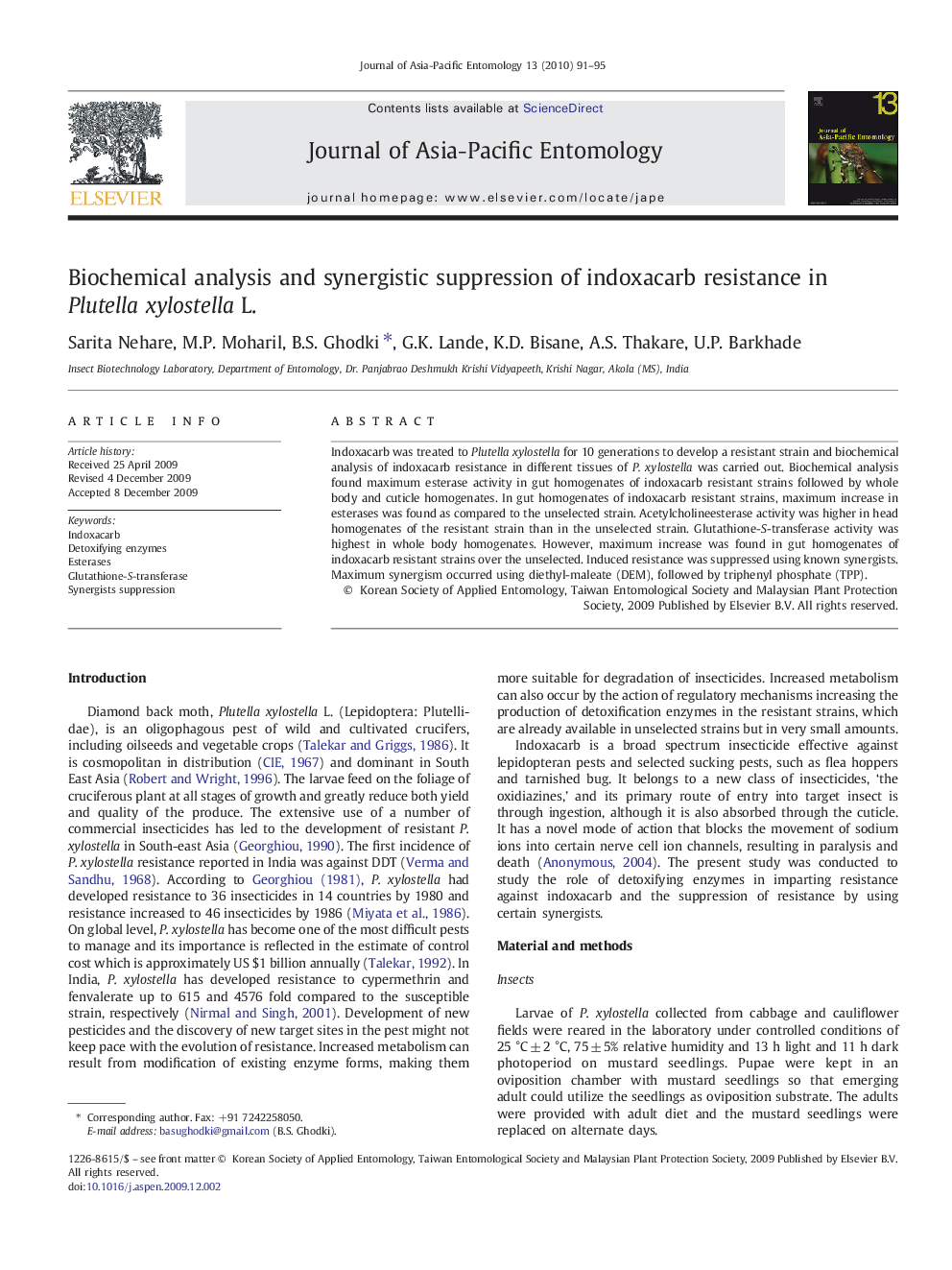| Article ID | Journal | Published Year | Pages | File Type |
|---|---|---|---|---|
| 4524965 | Journal of Asia-Pacific Entomology | 2010 | 5 Pages |
Indoxacarb was treated to Plutella xylostella for 10 generations to develop a resistant strain and biochemical analysis of indoxacarb resistance in different tissues of P. xylostella was carried out. Biochemical analysis found maximum esterase activity in gut homogenates of indoxacarb resistant strains followed by whole body and cuticle homogenates. In gut homogenates of indoxacarb resistant strains, maximum increase in esterases was found as compared to the unselected strain. Acetylcholineesterase activity was higher in head homogenates of the resistant strain than in the unselected strain. Glutathione-S-transferase activity was highest in whole body homogenates. However, maximum increase was found in gut homogenates of indoxacarb resistant strains over the unselected. Induced resistance was suppressed using known synergists. Maximum synergism occurred using diethyl-maleate (DEM), followed by triphenyl phosphate (TPP).
